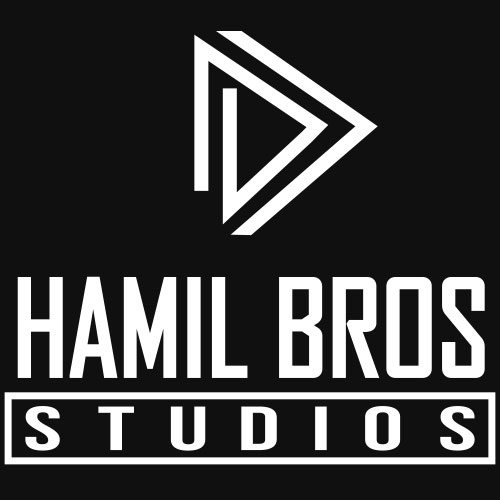Inside the LABOR XII Live Concert Video Production
4 Cameras, 1 Bold Mission
Join us as we dive into the electrifying journey of capturing LABOR XII’s live concert with Lacey Sturm. Discover the artistry and technology behind our production.
Kicking Off a Dream Show
LABOR XII and Lacey Sturm
At the beginning of July, we tackled an exciting project that was both stressful and sweaty—in the best way. Back in 2019, we founded our own hard rock band, LABOR XII. In November 2021, we released our first full-length album, Monsters. Having our own live concert video production company played a huge role in making that album a reality. We’ve handled all of our own video content for the band, including the “Mirror, Mirror” live acoustic performance, the “Suffocate” music video, and the “Psychofantic” short film and music video.
In addition to that, we created micro-documentaries chronicling the production of Monsters. These served two key purposes. First, we wanted to give people outside the music industry a behind-the-scenes look at what it’s like for a small, unsigned, independent rock band to self-produce an album. Second, we used the content to keep our crowdfunding backers informed and engaged throughout the live concert video production process.
Crowdfunding has a notoriously mixed reputation. Many campaigns go dark after launch, leaving backers unsure if the project is even progressing. We wanted to avoid that entirely. By showing our supporters that we were actively producing the album, we built trust and delivered transparency. Thanks to that consistent communication—and a visual journey rooted in live concert video production—our campaign was a success, and our backers felt confident in our vision.
In the past year, LABOR XII went through a lineup change. Our former drummer, Randy, got a great job opportunity, but it demanded all of his focus. We had a temporary fill-in for a while until we discovered Jeremy Velasquez—who’s now our not-so-new drummer. Once again, having full access to our live concert video production tools made a difference.
We used our live concert video production expertise to create a high-impact announcement video for Jeremy, followed by a formal interview and introduction. Jeremy has become an incredible addition to the band, and having him on board has added a new layer of fun and energy to this wild ride.
Strategic Planning for Live Concert Video Production
Crafting the Vision
That brings us to this video project. Our first live show back in action with Jeremy behind the drums was on the final stop of the Lacey Sturm Kenotic Metanoia tour. Just getting to play the show was already a huge deal for us. But even cooler than that, our album producer, Evan Rodaniche of Cage9 and former member of Powerman 5000, also produces Lacey’s solo project albums. Even cooler than that—Evan was Lacey’s touring guitar player.
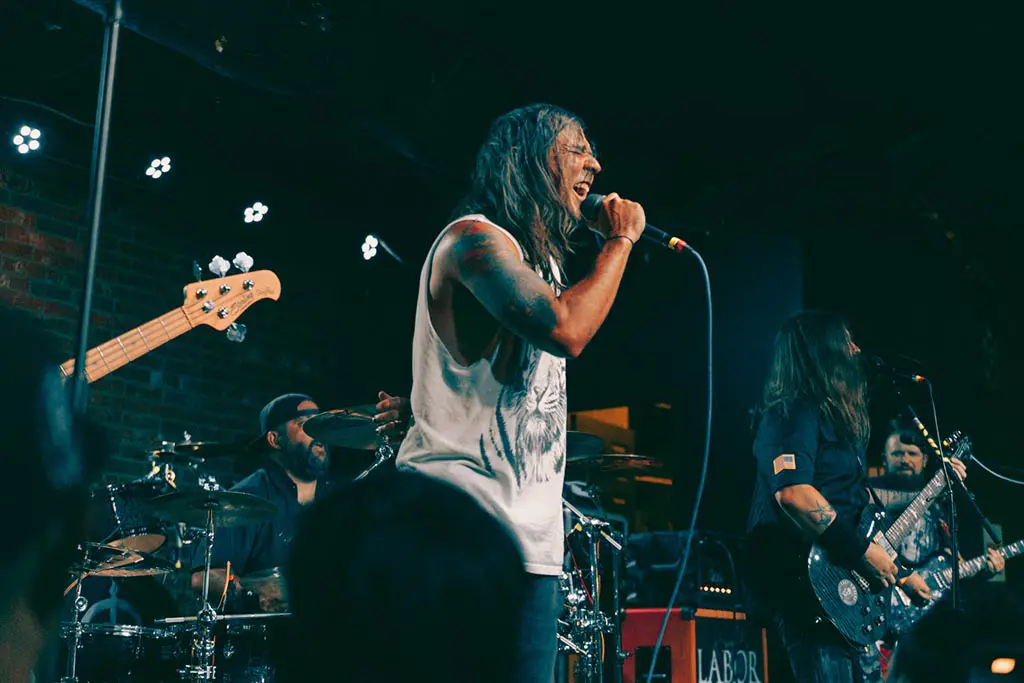
A Rare Opportunity
Let’s Do a Cover Song… Wait, Let’s Also Video It
We wanted to make this particular show special because we had an opportunity to create something incredible. After we were officially booked, we spent several weeks brainstorming exactly what we wanted to do. We came to the conclusion that we’d pitch Evan the idea of playing one of his Cage9 songs live, and having him do a guest appearance on it.
We reached out to Evan, and he was honestly really excited about doing that. From there, we made sure to rehearse the living snot out of “Master of Your Disaster”, so we came into the show as prepared as we could be. Rehearsals gave us time to work out bugs and tighten the performance.
Once that plan was in place, it wasn’t long before we decided we really wanted to document the moment on video. The challenge with live concert video production in this case was that we were also performing on stage, so we had to find and hire camera operators. We had several in mind, but time was tight.
Another wrinkle? The show took place over the Fourth of July weekend. We anticipated people would be out of town celebrating the holiday, which made staffing this live concert video production even trickier.
Experience the Concert Magic
Selecting Skilled Camera Operators
Finding the Right Talent: Behind the Lens
Our first choice was Josh Dansby, who we’ve had on countless productions with us for nearly 10 years. As expected, Josh was going to be out of town and wouldn’t return until after the show. At that time, Jeremy offered up his son Evan to operate a camera. Evan is an aspiring photographer with a decent natural talent for composition. He also has the drive to learn, and that’s a characteristic we always appreciate.
Next on our list was Nicholas Allbright. Nicholas was introduced to us by Josh Dansby early in 2024. He was looking for film set experience beyond what he had done with Josh during his time at Lubbock Christian University. We brought him on as a production assistant while shooting a proof-of-concept film for Jeff Nicholson about Bonnie and Clyde.
Nicholas was fantastic and really took to every role we assigned him throughout the day with fervor. When it came to filming this live concert video production, he was next on my short list—and luckily, he was available.
Hiding in Plain Sight
A Fortuitous Connection at the Innovation Hub
Our last camera operator sort of fell into our laps a few months ago. Hamil Bros was invited by Flint Avenue Marketing to be part of their 10-year anniversary small business expo at the Texas Tech University Innovation Hub. We had a booth where we met other small businesses, showed off our work, and made some great local connections.
During the expo, we met Samuel Fenton. Samuel had been brought in by Flint Avenue to capture video of the expo and the overall energy of the event. He stopped by our booth, and we ended up having an extensive conversation about cameras, lighting, clients, and general shop talk about the video production business.
We held onto his contact information, and when it came time to put together this live concert video production, Samuel came to mind. We reached out, and—thank our lucky stars—he was available and willing to jump in.
One of the ways we minimized budget on this project, since it came together unexpectedly, was by only needing their time and presence. We provided all the camera gear, prepped and ready. All the operators had to do was arrive, get a brief rundown, and start shooting. That’s one major advantage of having a streamlined, in-house live concert video production process.
With Evan, Nicholas, and Samuel confirmed, it was time to prep the cameras and bring our vision to life.
Building the Camera Arsenal
Camera prep usually doesn’t take us long. For most commercial productions, each camera has a dedicated build that rarely changes. But for this live concert video production, things had to shift a bit. We reconfigured several systems to suit the fast pace of a live music performance and the unique layout of the venue.
The “A Camera”
A Safety Wide
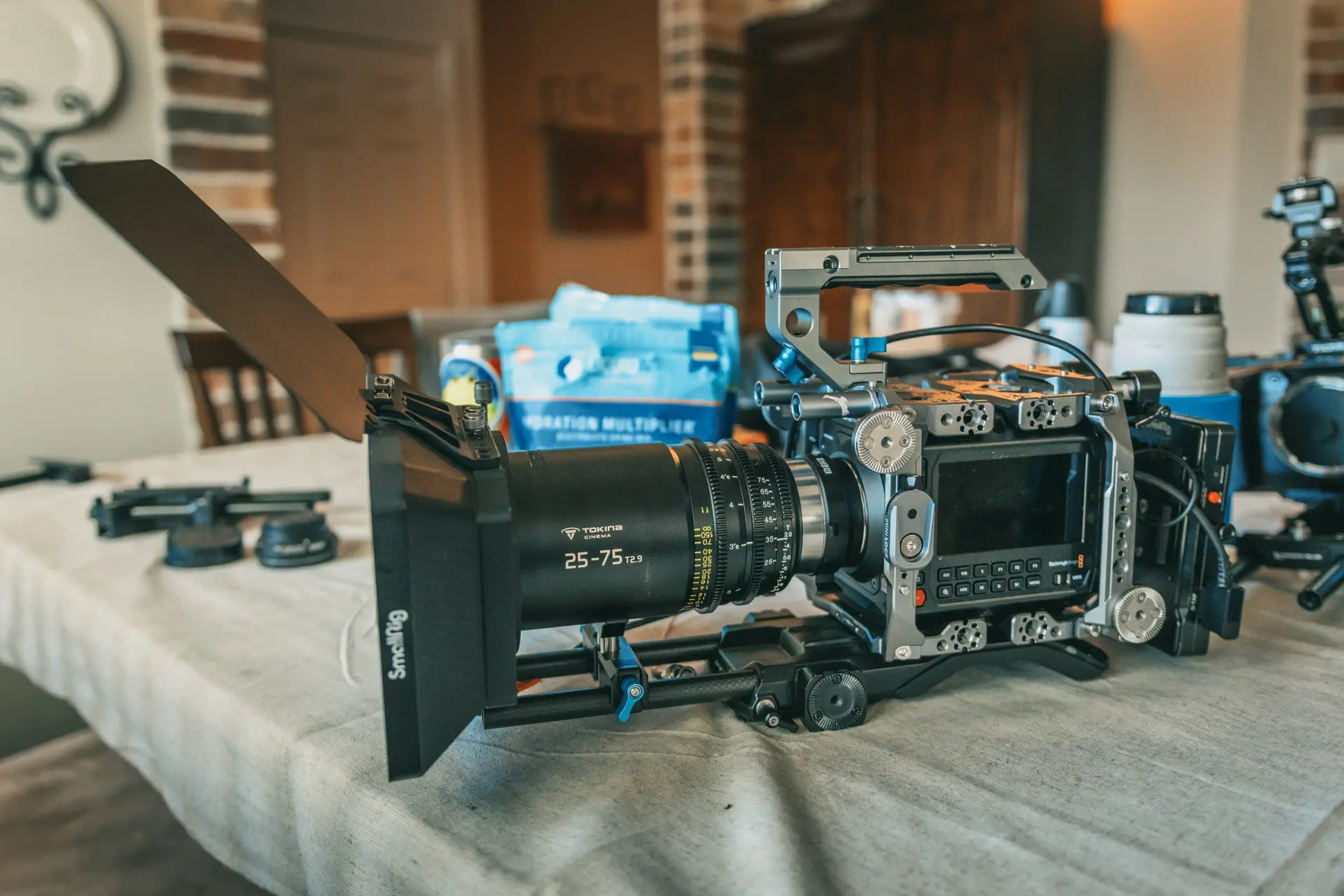
Our “A” camera was the Blackmagic Design Pyxis 6K. We love this camera, but here it served as a safety-wide static shot of the full stage. It was placed behind Lacey’s front-of-house engineer at the back of the venue.
The build was simple: the Pyxis body, Kondor Blue cage system, trigger-top handle, and a Tokina Cinema 25–75mm EF zoom lens, adapted with a Meike EF-to-L mount. While the lens is meant for Super 35mm, we avoided vignetting by staying zoomed in—perfect for static safety during a live concert video production.
The “B Camera”
Tripod-Based Tight Shot
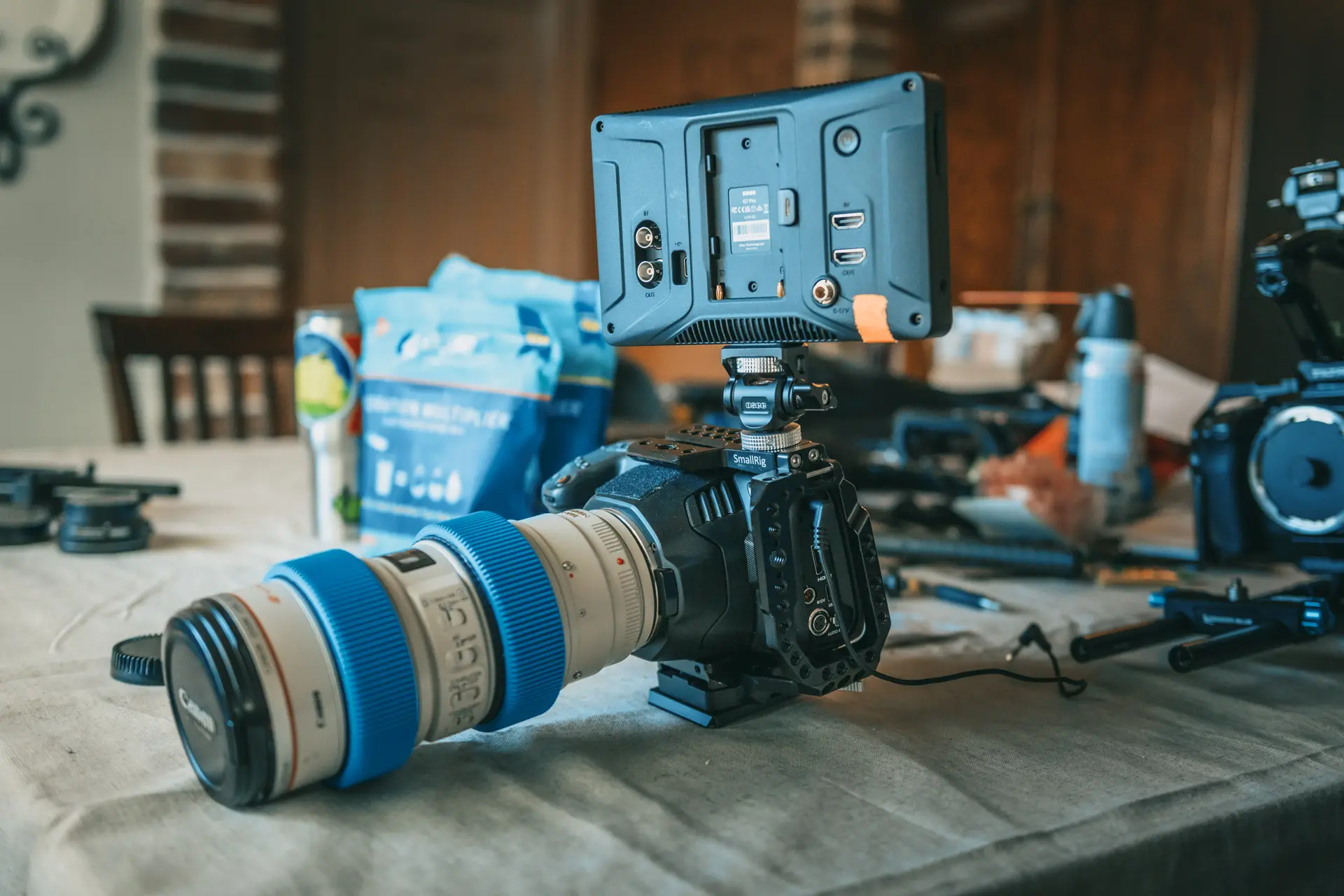
Our “B” camera was operated by Evan Velasquez, using a Blackmagic Design Pocket Cinema 6K paired with a Canon EF USM I 70–200mm lens and an Osee G7 Pro High-Brite Monitor. This tripod-based setup was perfect for clean close-ups and tight mediums.
Though Evan is relatively new to camera work, he handled the pressure well. He captured expressive moments and kept focus sharp—both essential skills in any live concert video production. With some further training, he could easily grow into a solid operator.
The “C Camera”
Handheld Rig
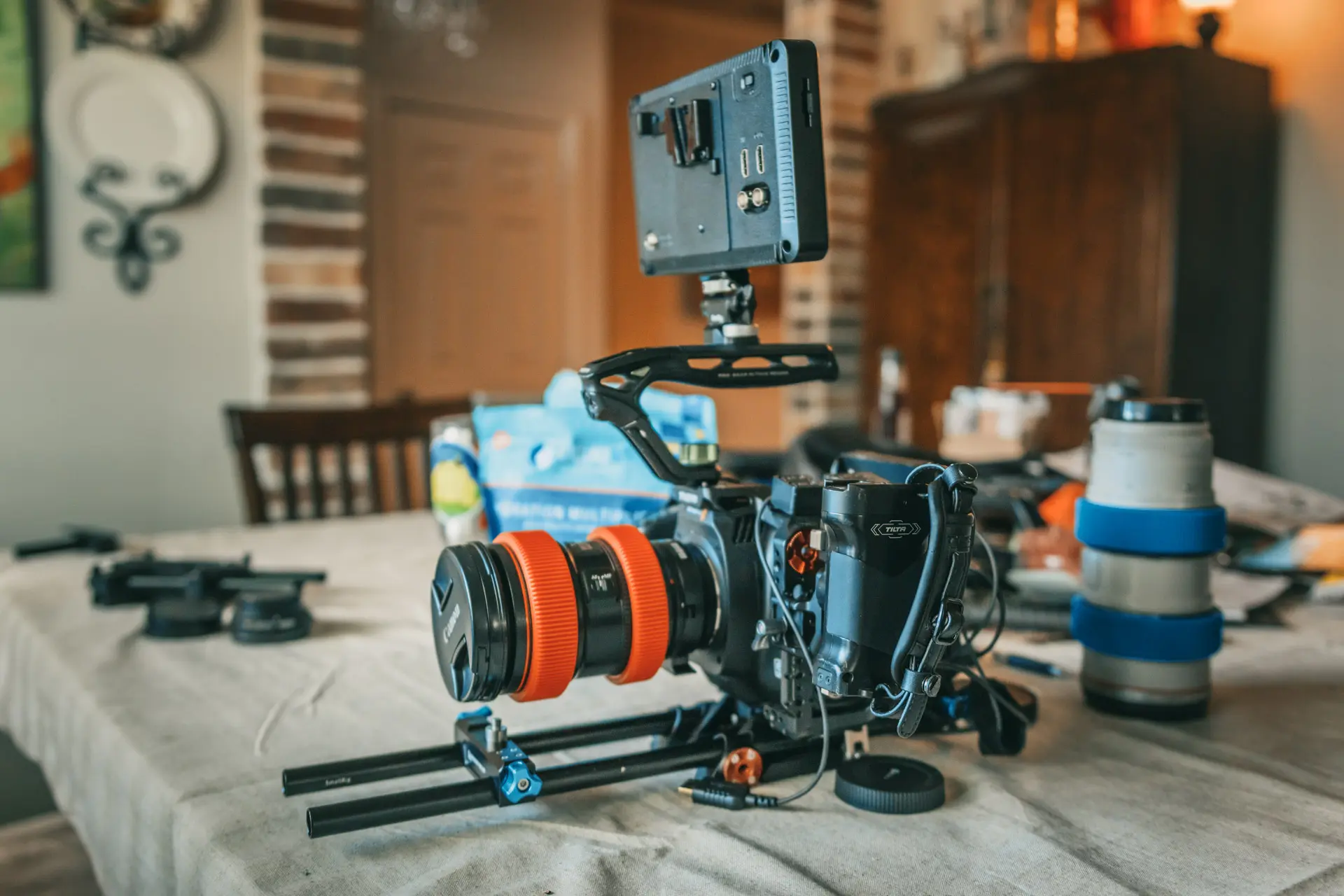
The “C” camera was our Blackmagic Design Cinema 6K Full Frame, built out in a handheld rig. It included the Tilta camera cage and side handle, a Canon EF USM II 24–70mm lens, and another variant of the Osee G7 monitor.
We put Nicholas Allbright on this setup, and he delivered. His handheld footage gave the live concert video production a raw, energetic feel that brought intensity to the edit. His creative framing and movement offered angles we wouldn’t have gotten otherwise.
The “D Camera”
Wide-Angle Roving Gimbal
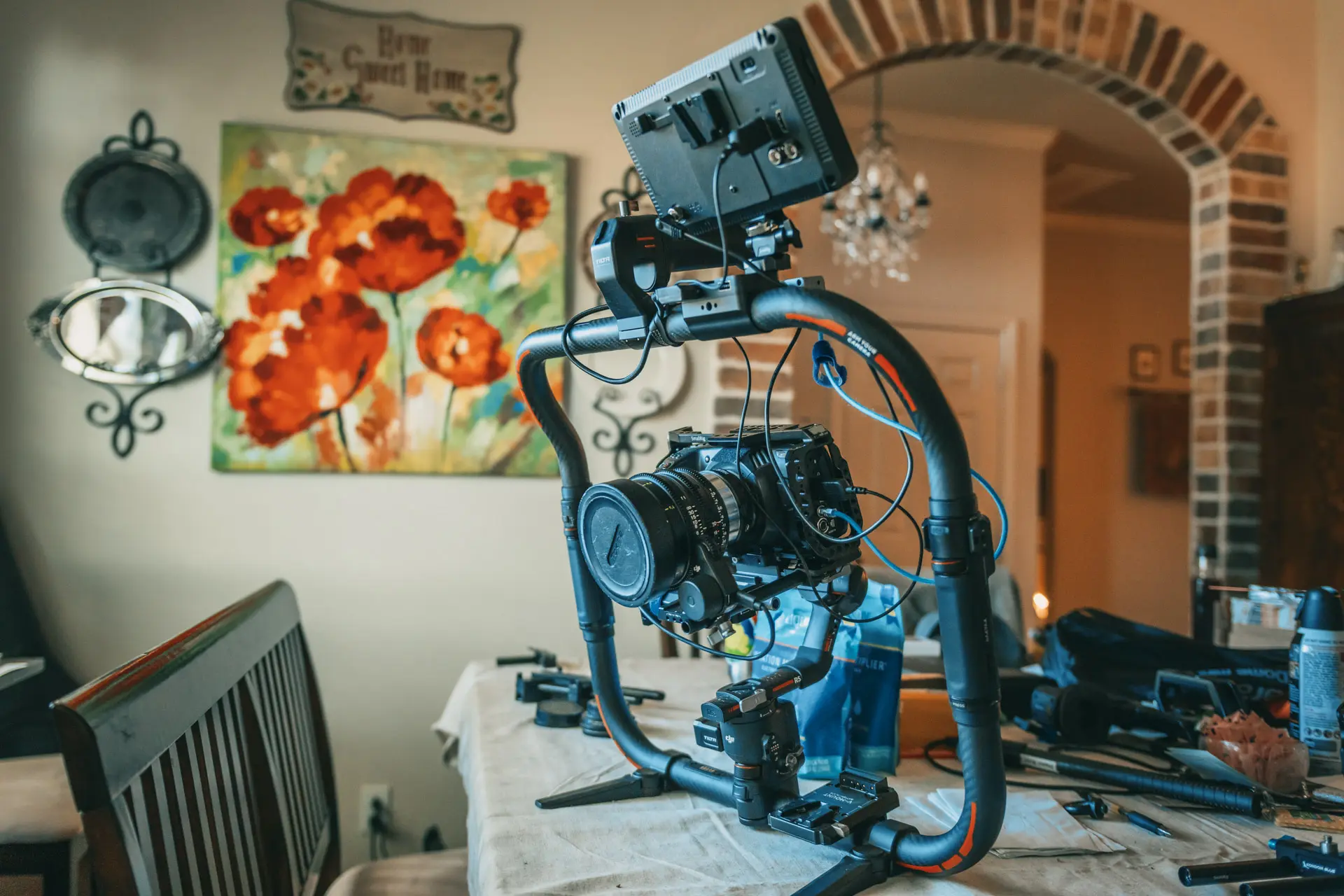
The “D” cam was our Blackmagic Pocket Cinema 4K, adapted to EF mount using a Metabones Speed Booster. It was mounted on our DJI Ronin RS3 gimbal, housed inside the full Tilta Advanced Ring, and paired with our Tokina Cinema ATX 11–20mm EF lens.
This configuration was handed off to Samuel Fenton, giving him total mobility through the crowd and around the stage. The ultra-wide focal length kept performers in focus with minimal effort—critical in a fast-paced live concert video production scenario. It also gave us lots of flexibility in post, which we’ll get into next.
Enhancing the Concert Experience
Polishing the Performance in Post-Production
The post production on this video series took us around 7–8 business days. That sounds like a lot for only shooting 35 minutes of total video, but there is a lot of work that went into the process, and we’re going to break it down step by step. A well-done live concert video production isn’t just about pointing cameras and hitting “record”—it’s about crafting an experience.
The Art of Color Grading
Enhancing Visual Storytelling
The color grading on this particular live concert video production series was immense. Our venue, Jake’s Backroom, doesn’t have much lighting for the stage, and what lighting they do have is typically underexposed and has some really nasty-looking color washes to it. We shot every camera with at least a 2000 ISO because of how dark cameras see the stage as opposed to what our eyes perceive.
The stage is typically flooded with heavily saturated purple or blue light. This works fine for your eyes but wreaks havoc on camera sensors. This is another reason we shoot exclusively on Blackmagic Design. These cameras have so much color information that we know we can torque and twist the footage and still get a relatively usable image at the end.
This live concert video production was probably the most extreme case we’ve ever had for these cameras, but they stood up to the test. You can see below the original color straight out of the camera and then the comparison where Ross did some full-on video production wizardry to bring the footage to life.
Crafting the Perfect Soundtrack
Ross is the audio wizard at Hamil Bros Studios, and he did a great job with the audio mix for this live concert video production. We use a Behringer Wing, which routes all of our instrument and microphone signals into our in-ear monitors.
One of the really cool features of this rack-mount mixer is its ability to record all the audio channels directly to an SD card. That gave us multitrack audio for post. We did have to do a little bit of cleanup to get the audio synced properly with the video, but overall it was minimal.
Once Ross had the tracks back in the studio, he made a few subtle adjustments to the live mix. Some minor EQ tweaks, a few level rides, and a light mastering polish later—we had a clean and punchy audio track ready for the final cut.
Seamlessly Weaving the Story
The Editing Process
The edit was, for all intents and purposes, a standard multicam edit. However, even though it sounds straightforward, multicam edits are deceptively difficult for live concert video production, especially if you don’t have a dedicated live cam switcher and a director calling the shots in real time.
Since we were doing this ourselves, we had four independent camera operators with a few directions, all timecode-synced using Tentacle Sync timecode modules.
The editing process involved not only selecting angles that worked visually, but also making sure those shots held up for long enough to be usable.
Sometimes, you’ll switch to a new camera and that’s exactly when the operator decides to move to another location, ruining the shot. This adds an extra level of complexity that’s easy to overlook in live concert video production.
Multicam Mastery: Crafting a Dynamic Concert Experience
The first pass of the multicam edits of this live concert video production took around two full business days. During that time, Jacob tackled the edit while Ross focused on the color grade, and the two collaborated on the final look and audio tone.
Once that first pass was complete, we were faced with a decision: do we release the full 35-minute set as one continuous video, or do we break it down into individual song performances?
As you’ve likely seen, we went with the latter. That choice allowed us to multiply our video content, giving each song its own moment and providing more traction across social platforms like YouTube and TikTok. It was a more flexible strategy for showcasing the work we put into this live concert video production.
The Art of Individual Song Edits
As mentioned earlier, each song we performed had its own dedicated edit. “Master of Your Disaster” was the first. We wanted the live concert video production to feel high energy, and when you’re working with a limited budget, one of the best tricks to fake that intensity is through handheld camera shake.
Of our four cameras, three were either on tripods or stabilized via gimbal. If we had 36 cameras like some massive productions, we could achieve energy through rapid cuts alone. But in this live concert video production, with just four angles, we had to lean into post-production techniques.
To simulate movement, Jacob used the Red Giant Universe camera shake plugin. While DaVinci Resolve also has a shake function, it takes more finessing to make it feel organic. Red Giant’s plugin felt natural right out of the gate and helped inject the right level of chaotic realism.
Refining the Multicam Edit
Multicam Pass 2
Once the full-length and teaser edits for “Master of Your Disaster” were finished, rendered, uploaded, and scheduled, Jacob went back in for a second pass on the multicam edits.
While the first pass looked good, it didn’t quite match the energetic pacing we wanted. So, Jacob went through each song individually and increased the cut frequency, added more post camera shake, and cropped certain shots to improve framing and composition.
Once those edits were locked, each song was duplicated into a new vertical timeline to build teaser content for this live concert video production.
Crafting Engaging Teasers
At this stage, teaser editing became relatively straightforward. Jacob selected sub–60-second snippets from each song that stood out and verified that the framing worked in a vertical 9:16 aspect ratio. Sometimes that meant repositioning footage so the subject wasn’t off-center or cropped poorly.
To finish them off, we created an end-motion graphic for all teaser clips, visually pointing viewers to the LABOR XII YouTube channel. These teasers didn’t just promote individual songs—they kept the momentum rolling and drove consistent traffic back to the core of our live concert video production campaign.
Delivering the Final Video
Strategizing the Video Release
After the first multicam pass of the live concert video production, Jacob focused on getting one specific video out first: “Master of Your Disaster”, which we performed with Evan from Cage9. We wanted to capitalize on the hype surrounding the show and get content out quickly while interest was still high.
At the same time, we strategized on teaser content. We decided that for every full-length video, we would release three teaser videos to promote it. The full-length videos would live on YouTube, while the teasers would go out across all social platforms: Facebook, Instagram, X, TikTok, and YouTube Shorts.
YouTube Shorts has a great feature that lets you link back to full-length videos, and it’s been incredibly effective at driving up our overall view count. YouTube loves Shorts, and this has helped boost visibility for our entire LABOR XII channel.
The teaser schedule followed this pattern: one teaser two days before the full video, one two days after, and a final teaser four days later.
Scheduling and Placing the Videos
Collaboration is at the heart of our release strategy. We work closely with LABOR XII and other stakeholders to synchronize our efforts. This involves regular
By the end of this live concert video production project, we had delivered a total of 20 final edits across social media and YouTube. These included five full-length song videos and 15 vertical teaser videos. The final step of post production involved writing copy for each full-length song release and condensing that copy for each teaser version.
We used the teaser text across YouTube Shorts as well as our other social platforms—Facebook, Instagram, X, and TikTok. That streamlined the process slightly, but scheduling still required significant manual effort. The full-length videos were scheduled for release every Friday at 7 PM Central Time for five weeks straight. Teasers followed our established rhythm: two days before, two days after, and four days after each main release.
This scheduling and copywriting process took the final two days of post. It was a hefty undertaking, but the result has been a clear boost in LABOR XII’s social media metrics—more views, more engagement, more followers, and more YouTube subscribers.
meetings and updates to ensure everyone is on the same page, from the initial concept to the final video release. By fostering strong partnerships, we amplify the reach and impact of each video, ensuring it resonates with viewers and achieves our shared goals.
Ready to Take Your Live Show to the Next Level?
This production pushed us technically, creatively, and physically—and we’d do it all over again. From multicam coverage to concert energy in the edit, we built a live concert video production that reflects the intensity of LABOR XII’s performance.
🎥 Want a show that lives forever on screen? Let’s talk about your next project.
📺 Catch every release from this series on the LABOR XII YouTube channel.
🔧 Curious about the tools and techniques we used? Check out more work from Hamil Bros Studios.
Let’s create something your fans won’t forget.
